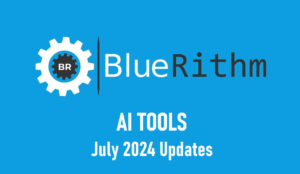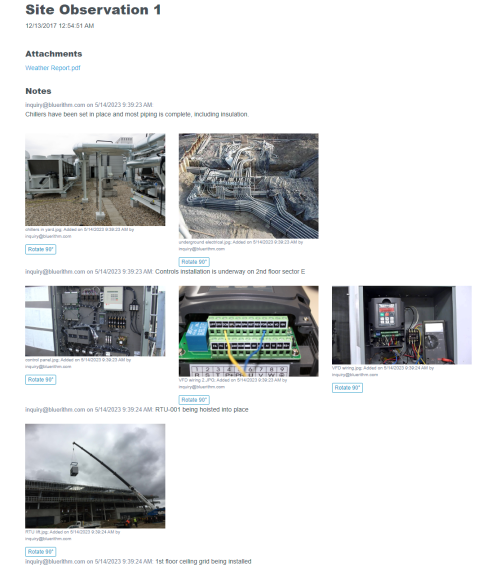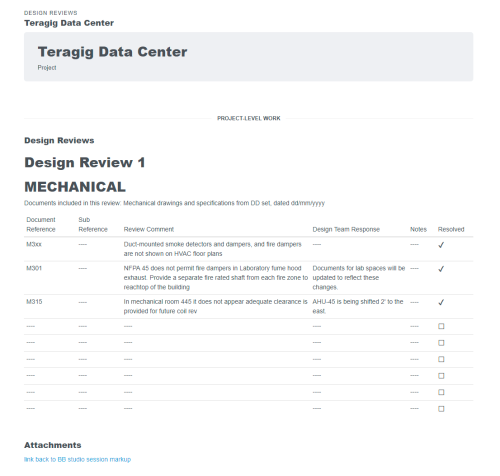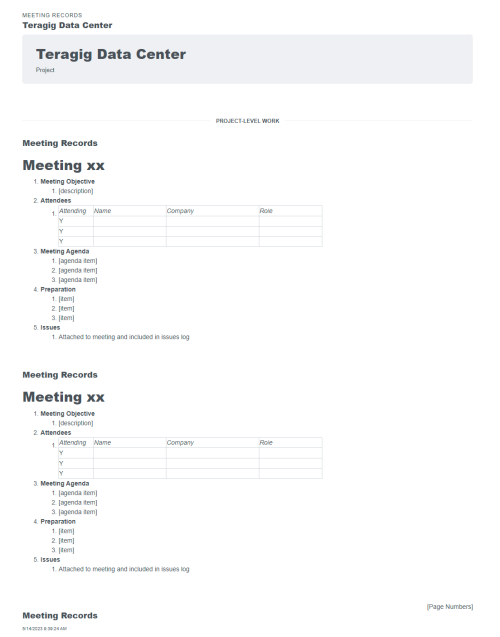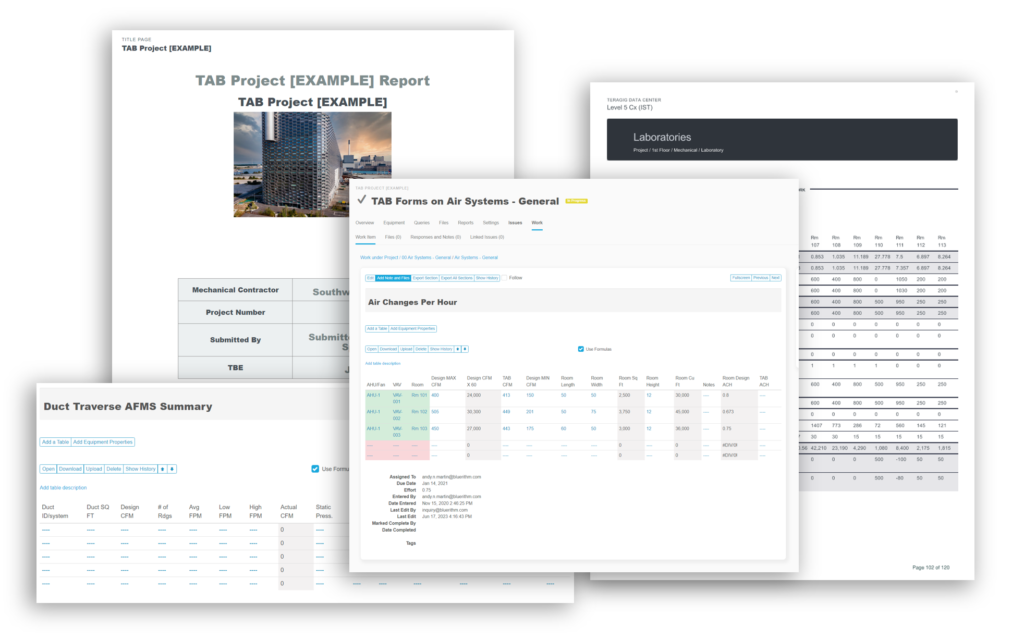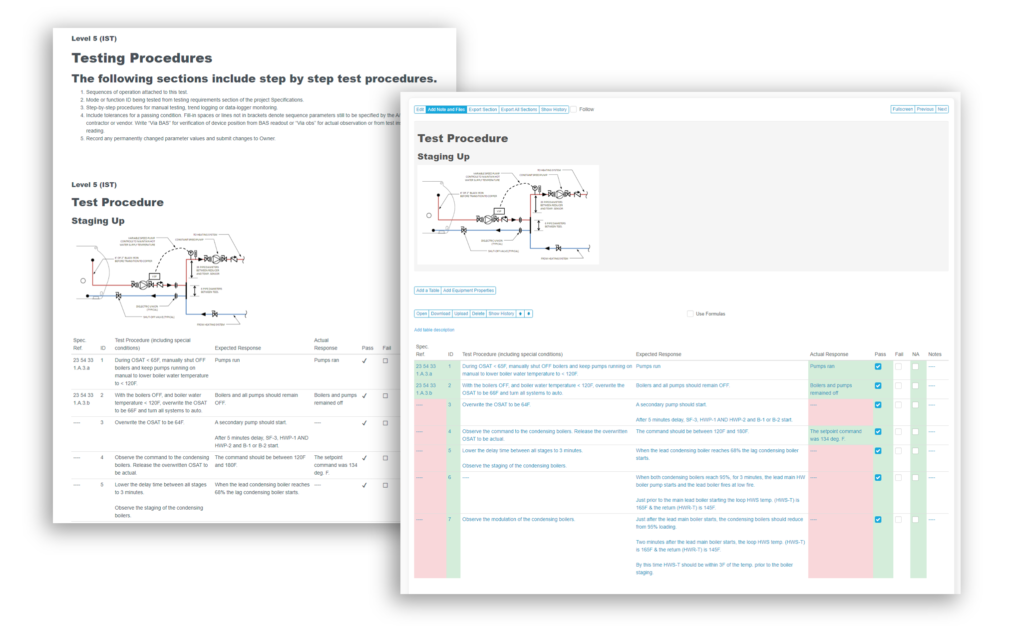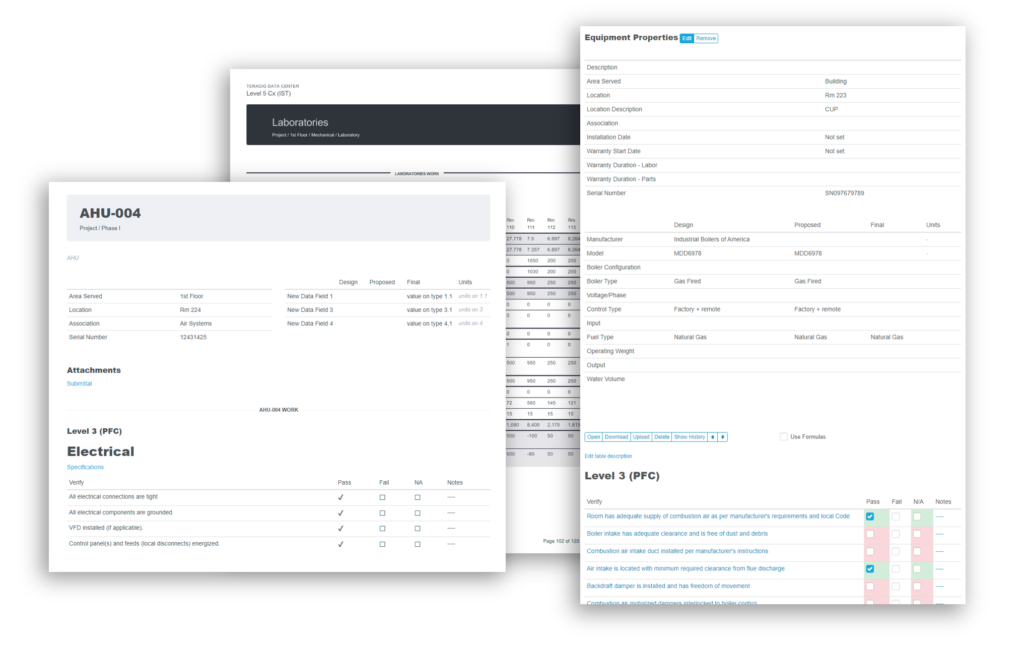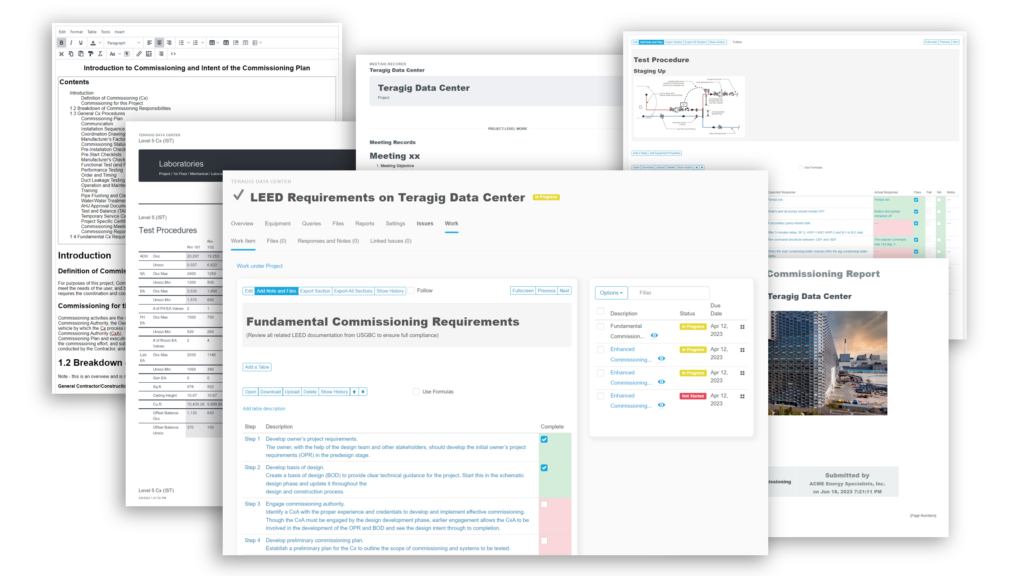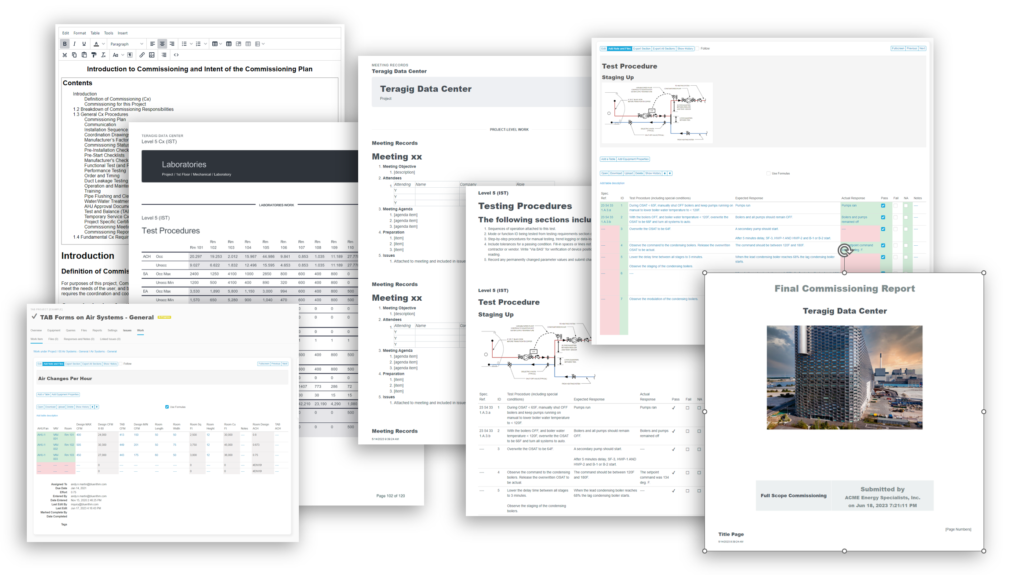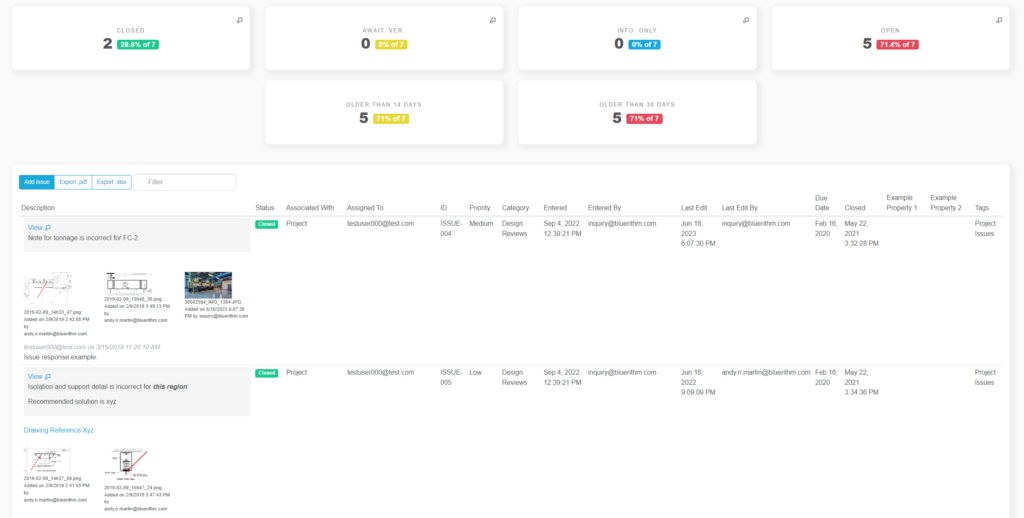The testing and balancing (TAB) of an HVAC (Heating, Ventilating, and Air Conditioning) system is a final step that is necessary in order to guarantee that the designed system and the workmanship of contractors meets requirements. Once the system has been constructed, testing is required to ensure energy is correctly routed within the constructed environment, and all equipment functions as intended. Any deviation in how a system has been constructed vs how it was designed can cause a system to become unbalanced.
The Test and Balance Process
Test and Balance (TAB) involves testing and adjusting the air and water flow, pressure, temperature, and humidity of HVAC systems. The process is typically done by certified professionals and requires specialized equipment to measure and adjust the HVAC systems. Visual inspection, functional testing, measuring airflow rates, adjusting system components, and documenting the results are all part of the TAB process. Optimal performance of the HVAC system is the ultimate goal of the TAB process. But, not only is TAB important for safe and efficient operation of HVAC systems, it is often required by building codes and industry standards.
Goals of Test and Balance (TAB)
There are several goals of Test and Balance (TAB), including ventilation, disease control, comfort, and compliance. It is important that the correct amount of ventilation air is provided to a space because excess fresh air can lead to an increase in humidity and insufficient fresh air can lead to an increased presence of carbon dioxide and the possibility of diseases being spread in the space. Contaminated air should be contained, and clean, fresh air should be directed to the right places. A properly calibrated HVAC system can ensure occupants of the building are content and won’t need to frequently make adjustments to the thermostat, thereby cutting down on energy expenses as well as managing costs. In the United States, testing and balancing has been incorporated into most building codes, making it legally required for buildings.
Test and Balance Services
Typical TAB services for HVAC include HVAC system surveys, indoor air quality testing, exhaust system troubleshooting, HVAC sound and vibration testing, temperature control system verification, air and hydronic system balancing and troubleshooting, and pressure and duct system leak testing and investigations.
Certified technicians should perform tests according to a standardized methodology. TAB certified specialists verify, test, and adjust HVAC systems post-installation or retrofit, during a building’s commissioning process, or whenever assessment of existing buildings is required.
The three main certifying bodies for TAB are National Environmental Balancing Bureau (NEBB), Associated Air Balance Council (AABC), and Testing, Adjusting and Balancing Bureau (TABB). TAB certification levels include Technician, Supervisor, and Firm.
Who benefits from TAB services?
Carrying out proper TAB activities during the commissioning process helps both building owners and occupants by ensuring the designed parameters are satisfied. Having a third-party certified TAB contractor ensures quality work is done.
We created this guide to help you understand Test and Balance (TAB) in more detail.


